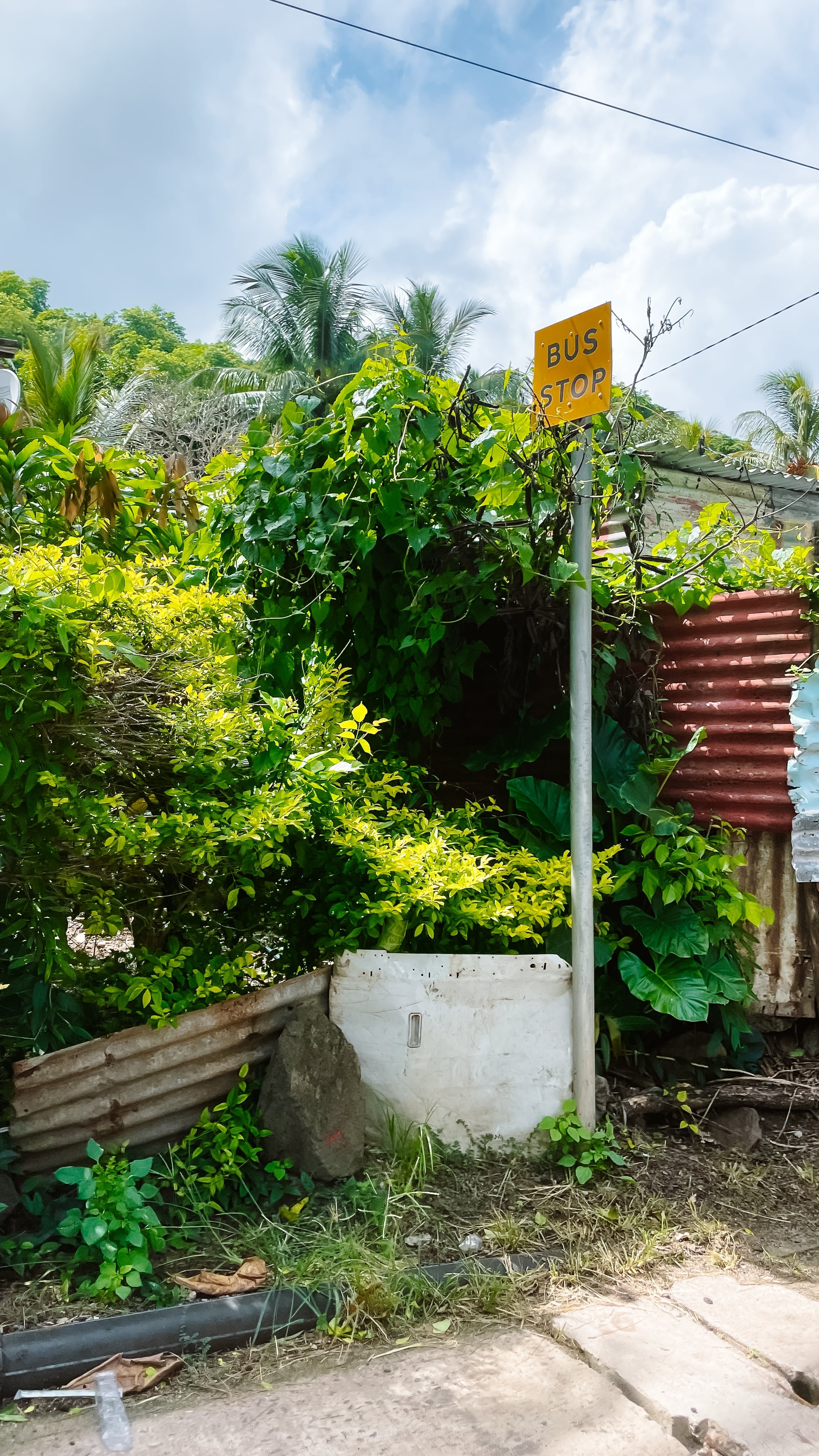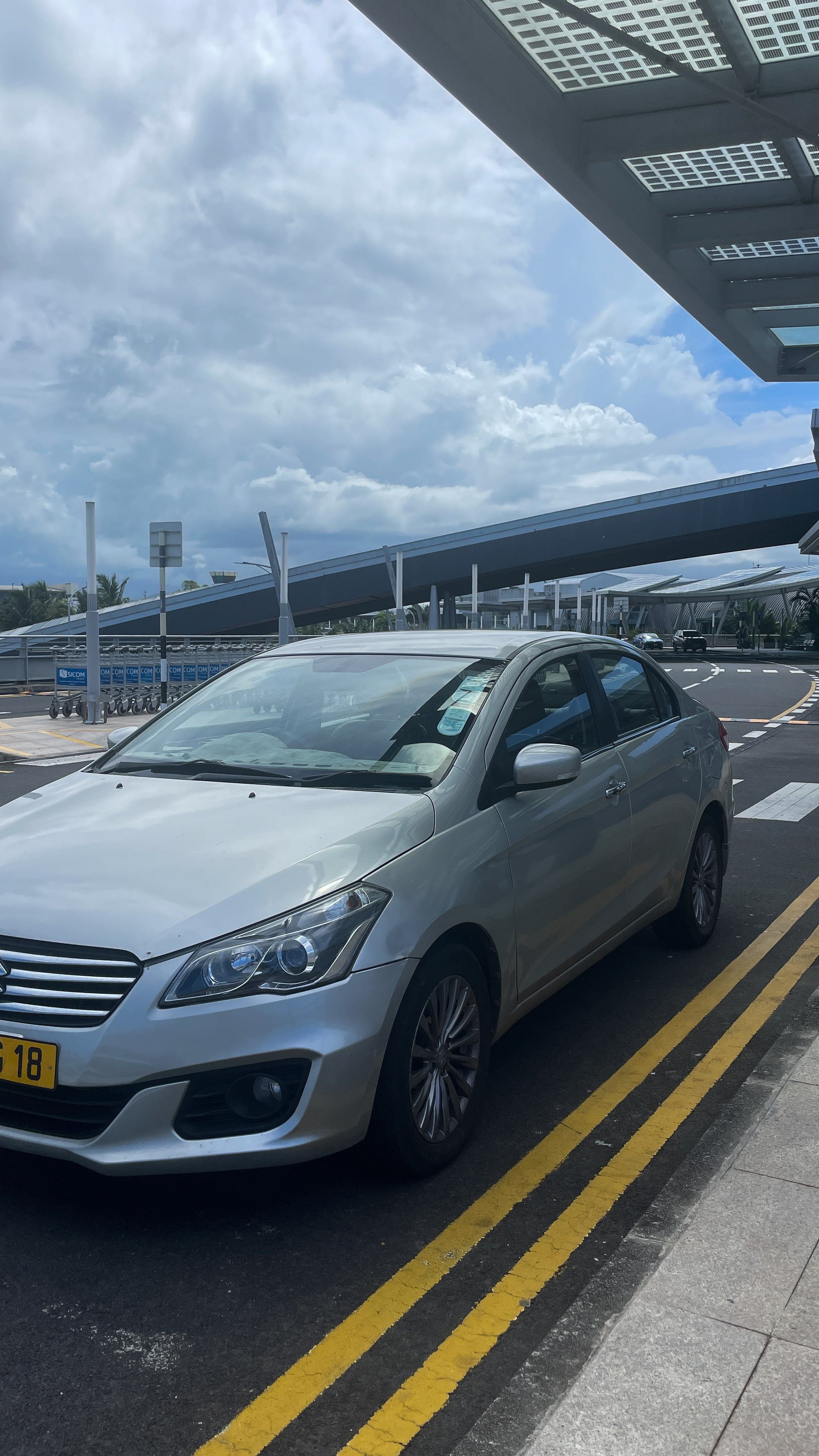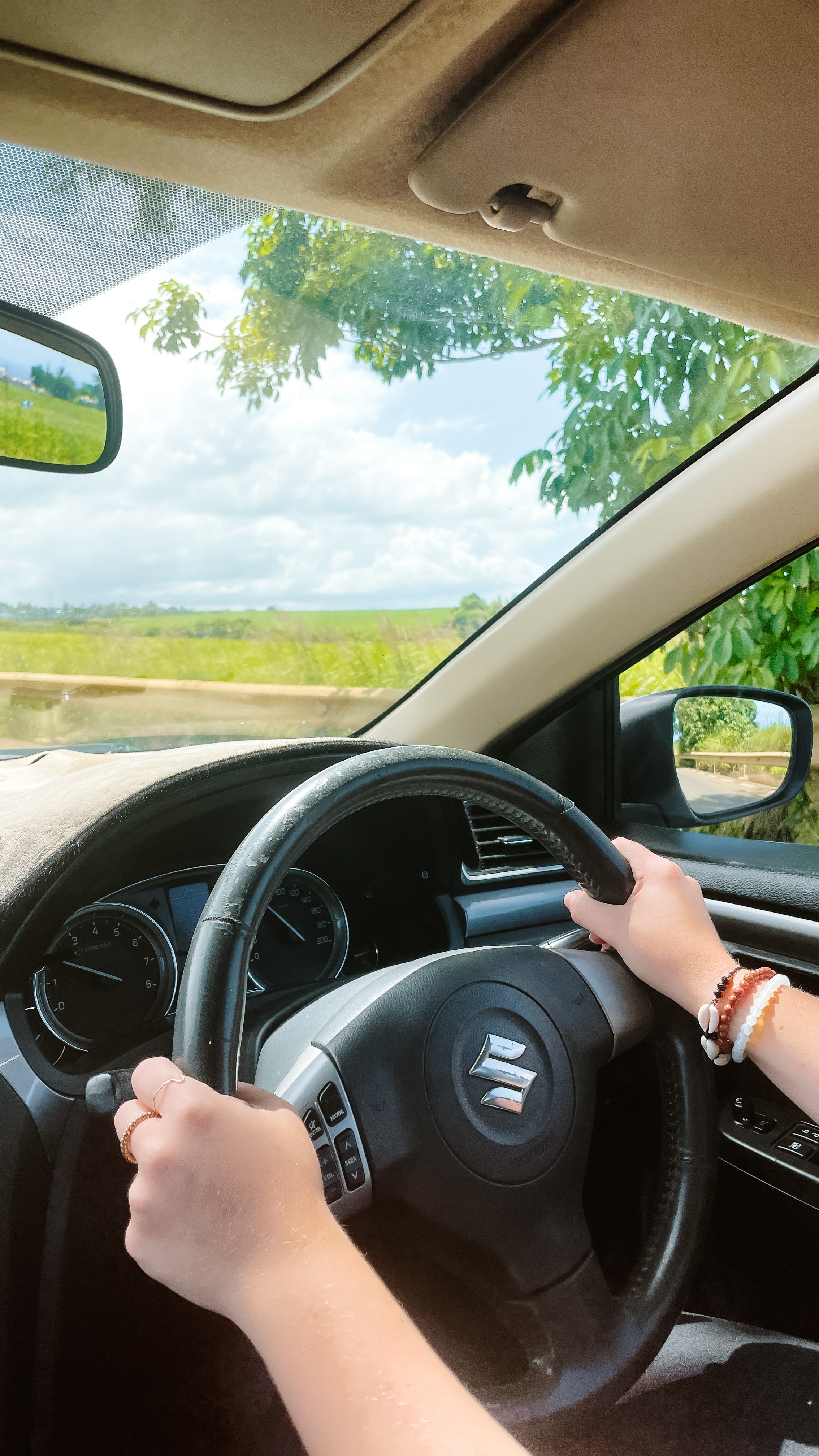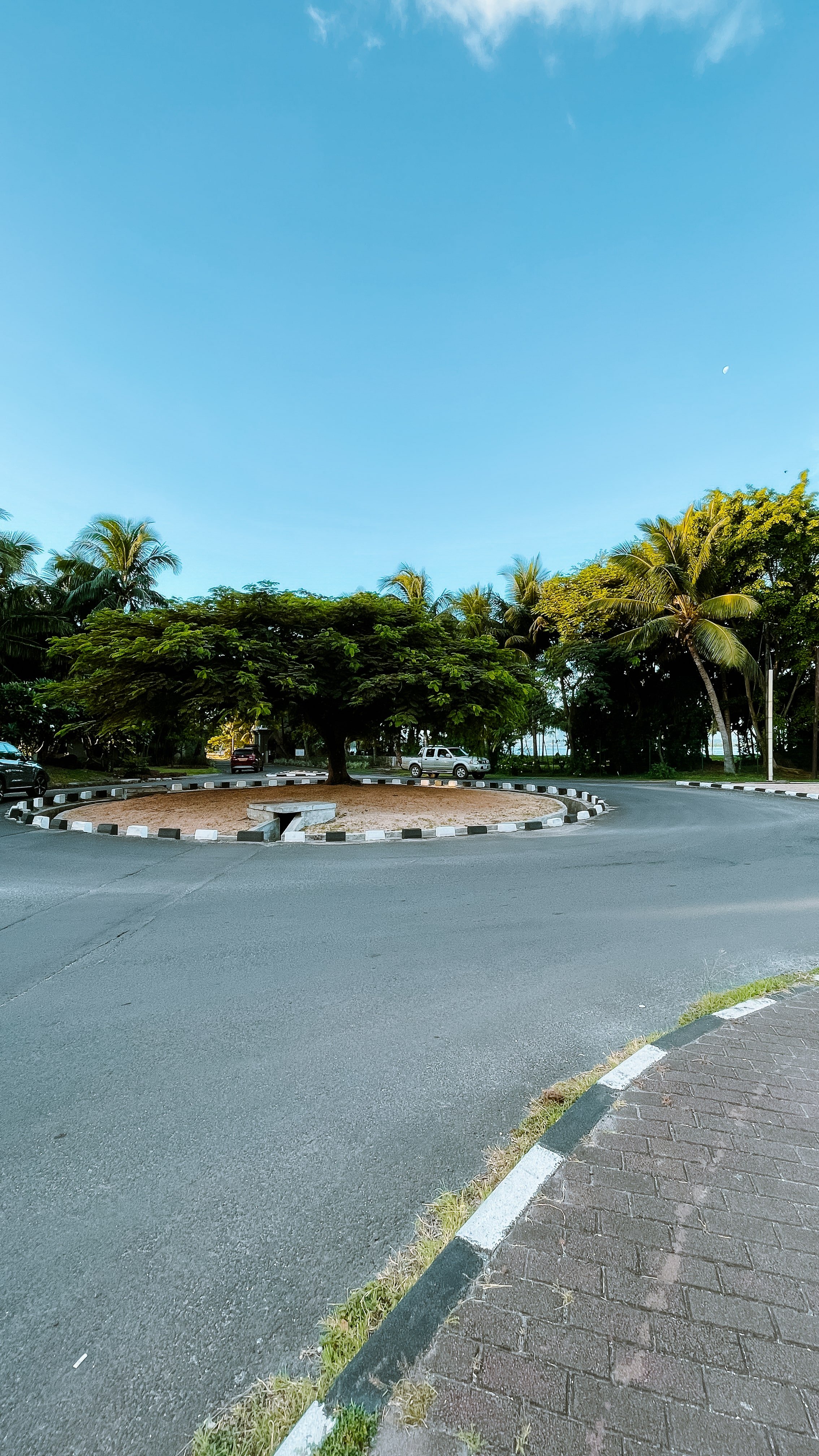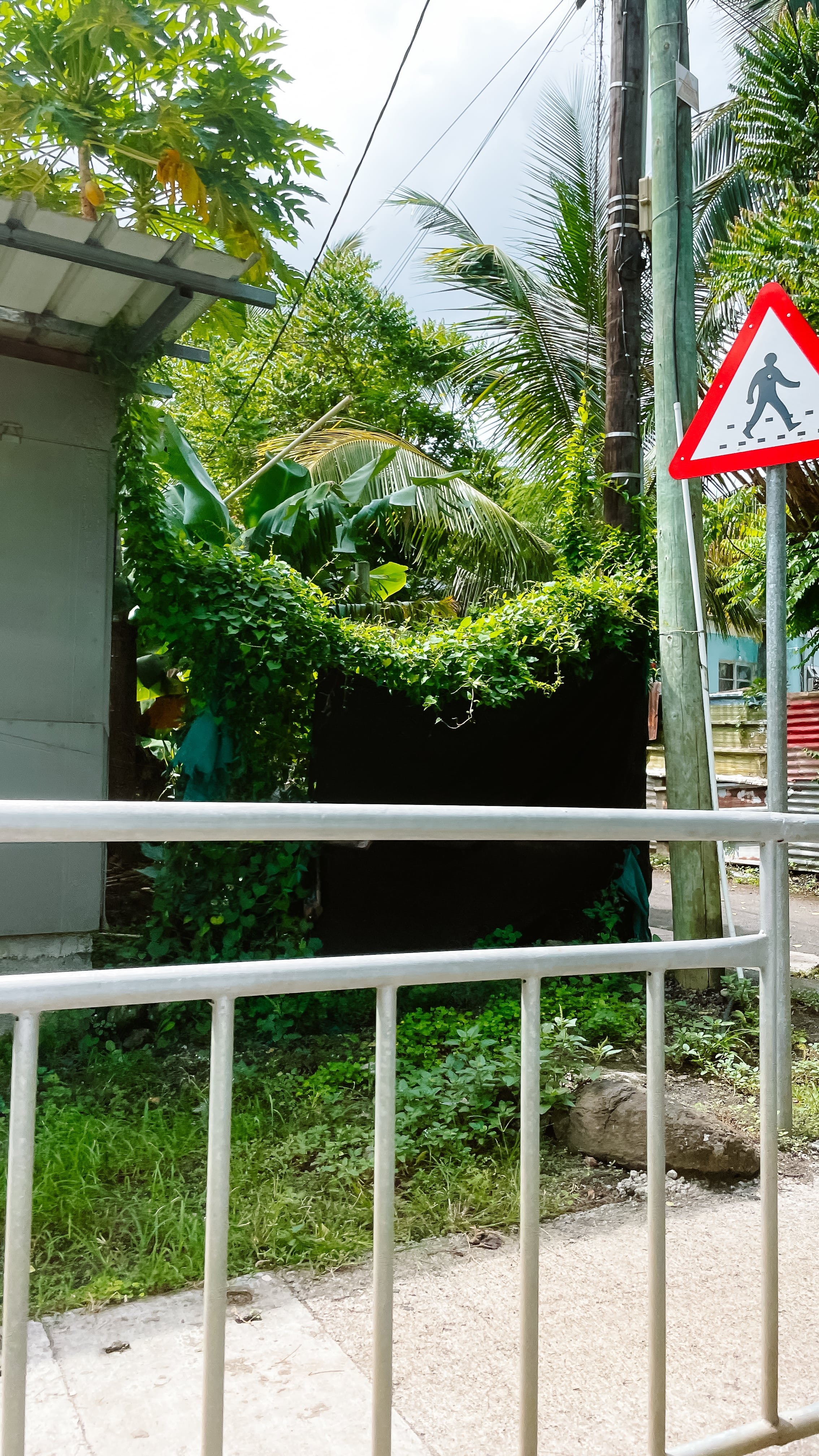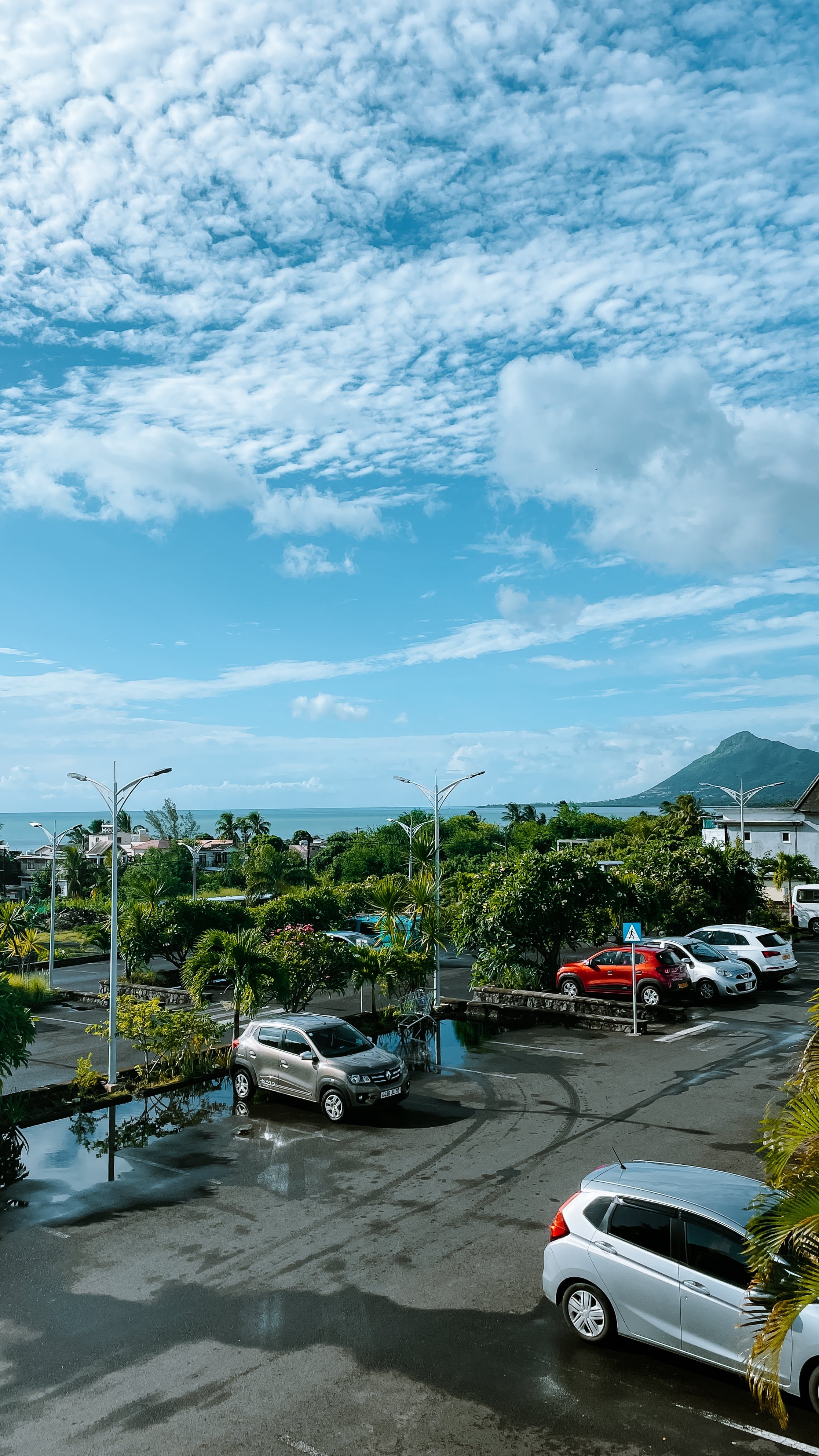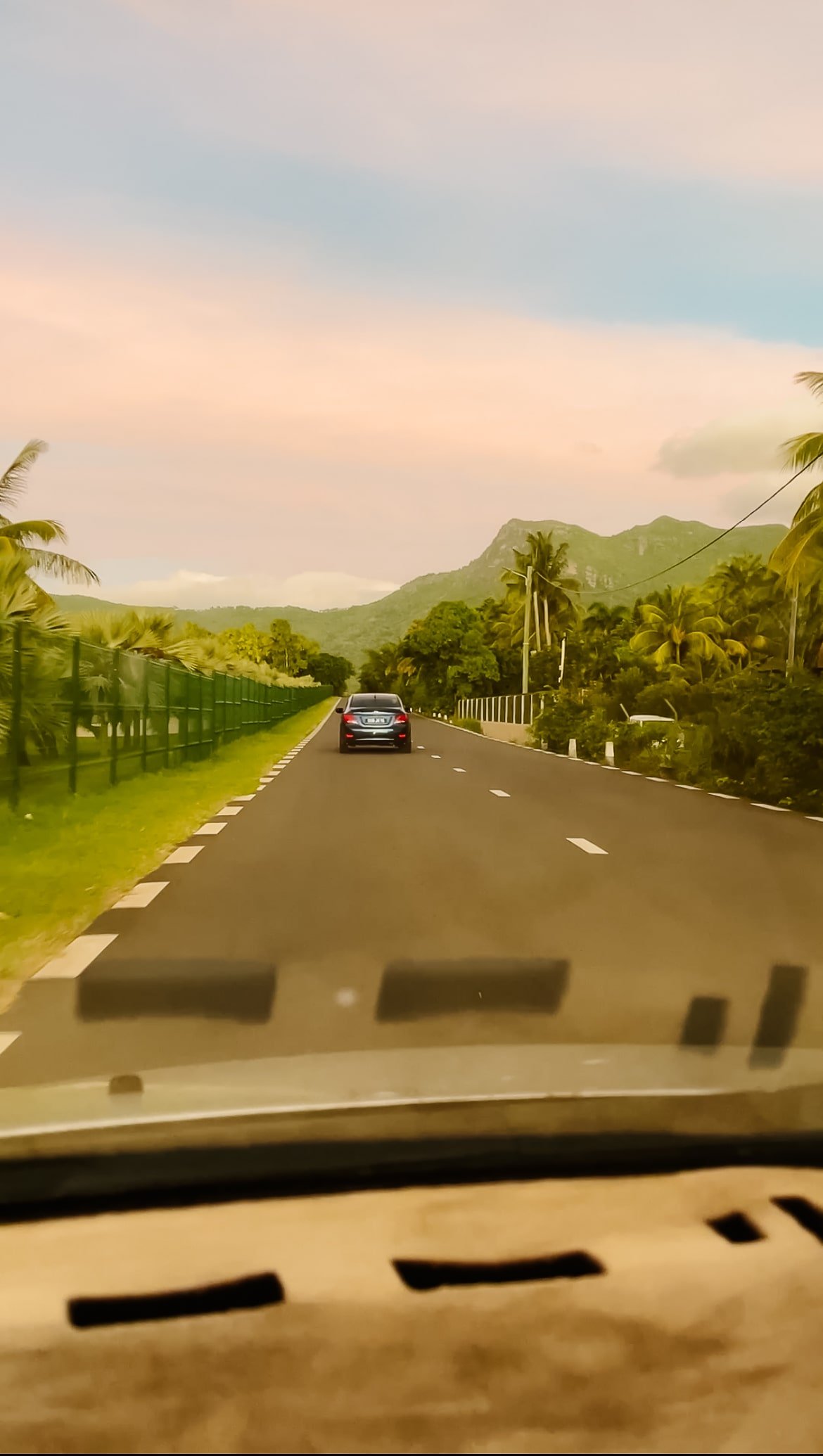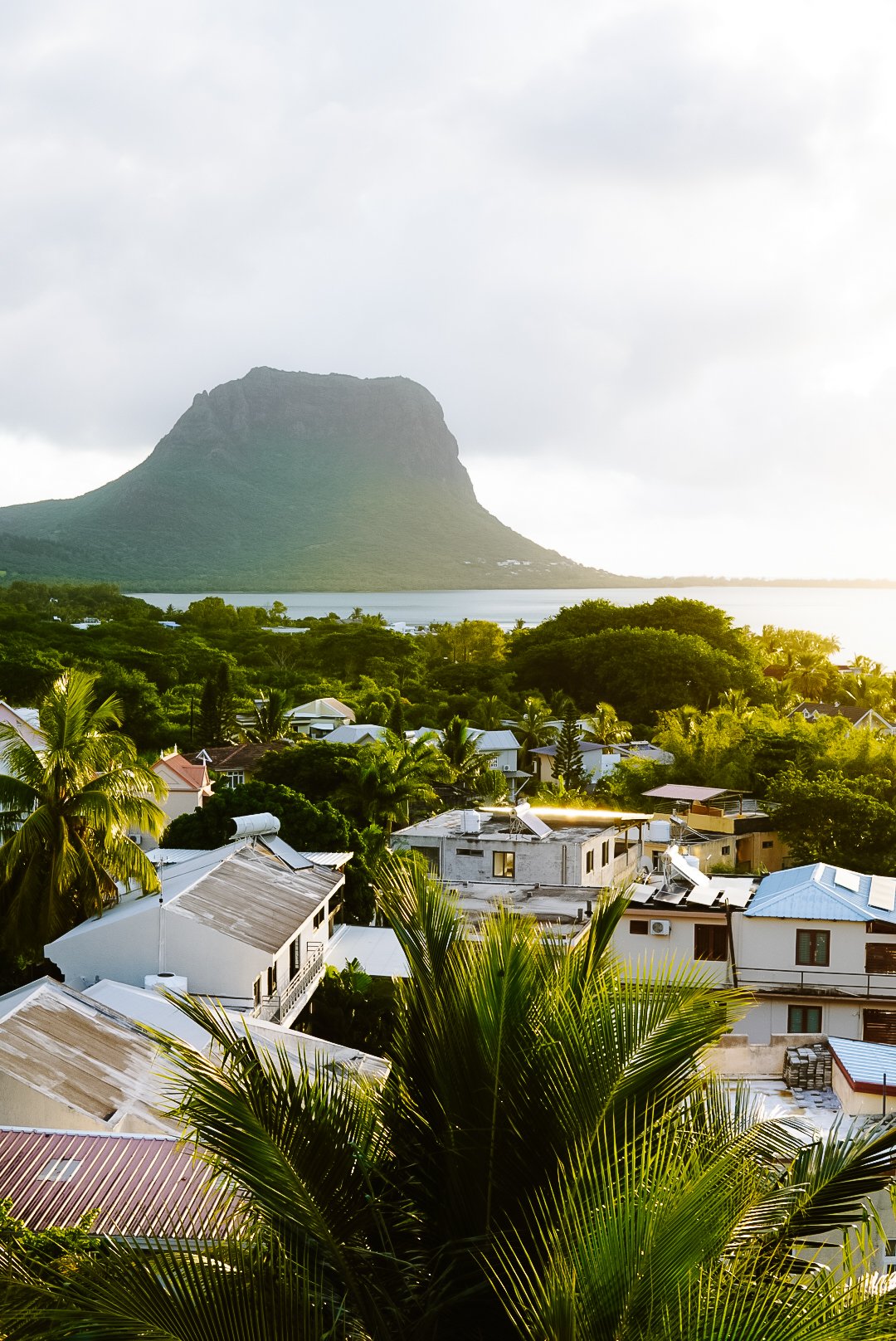Driving in Mauritius as a Tourist: Everything you need to know, cost, safety tips, & more
Driving for the first time in a new country can be intimidating. There’s a lot to learn, re-learn, and know before getting behind the wheel in a place you are unfamiliar with and has loads of different laws and rules for its drivers. Mauritius is no exception, but I am here to put any worry at ease and walk you through all those things to know so you can go into your Mauritius road trip confident and excited.
I road-tripped Mauritius for about 4 weeks, my favorite region being Southwest Mauritius. You can read my 3-day itinerary for Southwest Mauritius here.
Affiliate Disclaimer
Please note that some of the links on this website are affiliate links. This means that I may earn a commission if you click on the link and make a purchase at no additional cost to you. I only recommend products and services that I have personally used or thoroughly researched. Thank you for your support!
Best Ways to Get Around Mauritius
By far the best way to get around Mauritius is by car (which is why this blog is important). Everything you need to know about renting a car in Mauritius, the requirements, tips, etc, you can find here, or if you keep reading. But there are other ways to get around, too, if you aren’t keen on renting after learning about driving in Mauritius from this post.
So what other options do you have?
Day Hire/Taxi
Hiring a driver is the next best option if you don’t rent a car. There are a couple of ways to go about this:
Day Hire: This is where you book a driver to pick you up from your hotel to take you anywhere you’d like around the island for a day (or multiple days). We did this in addition to having our own rental car because it’s a great way to learn about the place you are visiting. You have a built-in local tour guide and someone to give additional recommendations along the way! You can book these online, or some taxi drivers will offer this service for you.
Taxi: You can find taxi drivers just about anywhere around Mauritius. If you are just needing to get from point A to point B, step out to the main streets near your hotel, and you will eventually have a taxi wave you down and ask if you need a ride. They were VERY available on the streets in all of the larger cities we stayed in. Alternatively, you will find taxi stands around the more touristy parts where you can get a driver immediately.
Needless to say, there is no shortage of taxi drivers and tour guides in Mauritius if this is the route you choose to go.
Bus
Mauritius has an efficient bus system that connects villages and is a popular mode of transportation for locals. It is also the cheapest transportation option for foreigners, but there are some things to know:
Most buses are not air-conditioned. They typically just have open windows to allow air to flow through.
At peak times of the day, the buses are pretty packed. This is typically early morning and evening (locals going to work and coming home from work). I recommend avoiding traveling by bus during these times if you can.
It will take you longer to get around on the bus than in a car.
Bring cash to pay for your bus fare.
Some bus stops are literally just metal posts with a small sign on them that says “BUS STOP.” Others have awnings and seating.
Always take an umbrella with you if you are planning to take the bus and happen to need to wait at a bus stop with no covering from rain or sun while you wait.
Check bus routes and plan your bus itinerary using this website.
Renting a Car in Mauritius as a Tourist
Where to rent a car in Mauritius
You have a few options for this - rent from the rental agencies available at the airport, rent from a local company outside of the airport, or stay at accommodations that organize your rental for you.
Airport rental agencies: You will find at the SSR Airport a rental car wing with all of the agency names you know and love, like Avis and Sixt, and then more local options like MAUHIRE, Pingouin, and AKD. If you want ease and comfort in knowing that when you arrive at the airport, you can pick up and go with a rental agency and vehicle you trust, then this is the best option for you.
Rent from a local company outside of the airport: You can either prepare ahead of time if you have a company in mind or wait until you are in Mauritius and do some shopping around for the best rates at local rental fleet companies. A bonus with doing this and planning is that most will drop off the car for you still at the airport when you arrive, so you have it immediately, or you can have it dropped off at your hotel. You are also more likely to get a better price than going through the airport agencies and have a bit more haggling power.
Stay at accommodations that organize your rental for you: There were a surprising number of hotels and serviced apartments in Mauritius that offered this service free of charge. Even if they don’t directly get everything booked for you, they can usually provide recommendations of a nearby agency and help you get in touch with them.
↓ IMPORTANT: DO NOT rent a car from GREEN MOTION ↓
I booked through my CapitalOne credit card travel portal our rental car for our stay in Mauritius. Because this was a company available to rent from through this portal, I did not question its validity, look up reviews, or even Google the company. I trusted that my credit card provider had vetted the companies. Green Motion was the cheapest option, they had availability and automatic vehicles, so I went for it.
My confirmation email for my booking says to pick up and drop off the car at the Sir Seewoosagur Ramgoolam International Airport, and the address given was the rental car location on site
Upon arrival, we went to the airport rental car area, and this company was not among the other rental agencies at the airport. We asked around those working for the rental companies and airport staff, and no one had heard of this company at all.
Next, we tried to contact the agency. We didn’t have a SIM card yet, but found a nice man who let us borrow his phone to call the number available on the confirmation. Upon calling them, they kept asking us for our reservation details over and over again (as if they didn’t have our confirmation and were scrambling to get it sorted). They hung up on us after saying they had to call us back. We didn’t hear back for about 15 minutes and decided to call them back ourselves. They ignored the call, and we never heard from them again.
Now we had already paid in full, and according to the booking, it was non-refundable. I immediately sent in a claim to my credit card, and luckily they sided with me (because we never got what we paid for - I had no rental car to show for it), and I was refunded in a couple of days.
I later did more research on the company and found their official website, which explicitly states where to pick up and drop off the rental car. And guess where that is? Among all of the other rental car booths in the airport, exactly where they WERE NOT located. In addition, I found they had only 3 reviews on Google, 2 of which were 1-star, and a similar situation of the company essentially accepting bookings and not delivering.
How much is a rental car in Mauritius?
On average, expect to pay around $40/day for a rental car + rental insurance in Mauritius. We asked one of our hosts if that was a good price, and he said it was because of insurance being included.
We had our Suzuki sedan from a local rental car fleet for 24 days, and in total, paid about $1,100 USD.
For perspective, we also got a quote from a chain rental agency at the airport for 21 days. Without insurance, we were quoted USD 800. After insurance would have been added on it would have been about the same for fewer days.
On that note, pay for insurance to save yourself from any headache should something happen while driving. The insurance included with our rental was full coverage, so we would have been covered no matter what. It’s tempting to want the lower price and skimp on things like insurance, but I (and rental agencies) highly advise against it, especially as a driver in a new place.
Requirements for renting a car in Mauritius
Disclaimer: I am a US citizen with a US passport, so this information is my personal experience and what MY requirements were for renting a car in Mauritius. This could be different for other nationalities. Please do your research about renting a car in Mauritius and your requirements if you are from a different country.
As a US citizen, all I needed to rent a car in Mauritius was my valid state-issued driver’s license (in my case, my Texas DL). US citizens are allowed to drive in Mauritius on their US DL for up to 4 weeks. If you intend to drive for longer than 4 weeks, you will need an International Drivers Permit (IDP), which you can obtain from your nearest AAA office. Super easy!
In addition, you must be at least 21 years old to rent a car in Mauritius.
Road signs & road conditions in Mauritius
Road signs are very easy to follow and mostly self-explanatory, but a FABULOUS resource to understand all of the road signs you will see around Mauritius, I recommend checking out this road sign directory website.
The road conditions around Mauritius are good. Here’s a general breakdown of the kinds of roads I came across and what to expect.
Highways: The main highways have at most 2-3 lanes, are well paved, and have good lane visibility. It is common for these highways to have roundabouts, so you won’t see speed limits above 80-110km/h.
Primary roads: These roads are likely the most common roads you can expect to drive on. These are at most 1 lane each way, and sometimes even less. Depending on where you are, these roads may be wide enough for 2 cars to pass each other with no problem. In other parts, one car has to pull over to allow the other to go. They may go from having a divider line in the middle of the road for each lane to suddenly not and a road sign indicating the street narrows for a few meters. Keep an eye out for these signs.
There are typically no sidewalks here, so watching out for pedestrians and bikers is very important. The speed limit usually stays around 40-60km/h.
You are more likely to come across the occasional pothole or construction area, but these roads were still widely in great shape.
Village/rural roads: Sometimes these are not paved. There are a lot of hiking, waterfalls, and nature spots that may lead you to a dirt/unkempt road. So proceed with caution. You may want to get out and walk a bit to see the road conditions before going down the road. After heavy rains, these roads can be very muddy and make you prone to getting stuck. A lot of rain also results in erosion of the dirt paths, so much larger potholes and dips are expected. If this is something you are worried about but want to do this kind of exploring, get a 4x4 to feel extra safe, park outside the dirt road and walk the rest of the way, or hire a driver for the day who could better navigate these roads.
Driving etiquette/laws in Mauritius
There are a few etiquette points to touch on that will keep you and other drivers safe on the road:
You drive on the left side of the road in Mauritius & the steering wheel is on the right side of the car typically.
It is illegal to be on your phone while driving, and all passengers should wear a seatbelt.
Keep your ID on you while driving. I also kept a photocopy of my passport and my International Driver’s Permit handy just in case.
Most street speed limits range from 40-60 km/h (about 25-37 mph), with the highest I saw on the island ranging from 80-110 km/h (about 50-68 mph) on major highways. So very comfortable, safe speeds.
Honking and flashing lights are normal, but this is more of a way to alert others that you are on the road than it is a rude gesture. For example, if you are stuck behind a vehicle parked in your lane (which is a common occurrence), you may flash your lights to let oncoming traffic know that they can go first before you go around into their lane. It is also normal to flash the car in front of you to let them know you are going around them. Another example is honking as you are coming up a steep hill or around a tight corner to alert any oncoming cars that you are there to be cautious.
It is very common for cars to overtake you. I saw this, especially with taxi drivers. They were the most aggressive on the road, trying to get their clients around. Stay calm, don’t speed up for them, and let them pass you.
If you WANT a car riding you to overtake you, stick your hand out the window to wave them by and drive to the far left of the lane to give them space.
It is also very common for you to need to overtake cars, scooters, bikes, buses, and people walking! When doing so, be cautious of your surroundings and oncoming traffic.
When you need to go around someone or something into oncoming traffic, flip on your blinker to alert oncoming cars and cars behind you of what you are doing.
Getting petrol in Mauritius
The island of Mauritius is not very big, but that doesn’t mean you shouldn’t plan your fill-up stops while on the road. Most villages will have at least one gas station, though some won’t have any and require you to drive to the next town to fill up (and that sometimes can be quite the trek).
For example, while staying in La Gaulette, the closest gas station was up the road, about a 10-minute drive away. The issue is that even though this was a chain gas station (Shell), it wasn’t open most days. If it wasn’t open, the next closest gas station was another 10 minutes further up the road, which also wasn’t always reliable. The next option is in Flic en Flac (over a 30-minute drive from La Gaulette), which was consistently operating while we were there.
A general rule of thumb I’d recommend is if you are getting low and pass a gas station, stop to fill up while you have the chance.
Here are some more things to know about getting gas for your rental in Mauritius:
Most stations have either self-service lanes or attendant-serviced lanes where someone fills up your car for you.
You can use a card or cash at most stations.
Many gas stations seemed to have odd hours for no rhyme or reason. (Prime example above with a Shell). Also, very few, if any, are 24 hours.
The pump handle colors are opposite those in the US. Regular gas is the green nozzle, and diesel is the black nozzle. Be sure to double-check this at whatever gas station you stop at.
The price of gas is comparable to Western country gas prices. It cost us USD 50 to fill up our small Suzuki car when it was on a 1/4 tank (note: this was as of visiting the country in March 2023).
Parking in Mauritius
Parking around Mauritius is simple and free, depending on where you are. If you are visiting Port Louis and want to park in the city, I recommend parking at Cauden Waterfront. There is a small fee to park here, but it is a good spot to leave the car if you intend to explore the city for a few hours.
Outside of Port Louis, I noticed it’s more of a free-for-all with parking. Most hotels and serviced apartments will have private parking for their guests, sometimes even gated. Most public beaches have large parking lots or street parking, some paved, some compact sand, available to visitors. The most difficult thing to find parking for would be restaurants. Most do not have dedicated parking within the more touristy parts. Some will have street parking, or there may be a community parking area or grocery store down the street, and you need to walk the rest of the way.
Because of this, we chose 99% of the time not to drive to lunch or dinner and instead walk from our accommodation to where we wanted to eat. Luckily, most villages have plenty of restaurants within walking distance from the accommodations in the area.
Extra tips & things to know about driving in Mauritius
Use your mirrors to help align yourself in your lane if you are new to driving like this. I found I kept wanting to be way too far to the left in my lane to get away from oncoming traffic, but that really wasn’t necessary. It takes some time to readjust!
Be mindful of drop-offs on the side of the road. There are a lot of these in Mauritius, and using your mirrors to stay in your lane is an important practice.
I recommend staying at or under the marked speed limit at all times. You will frequently see speed zone cameras that will ticket you if you are speeding. You will know you are approaching one because there will be a sign and large yellow cameras pointed toward the road.
I recommend practicing driving on Mauritius roads in good conditions during the day before driving at night or in the rain.
If you can only drive automatic transmissions, be vigilant when booking your rental car to ensure you are booking an automatic transmission. Manual transmissions are very common in Mauritius (and also usually cheaper to rent), so double-check your selections before paying!
On that note, if you are not a strong manual driver - even if you’ve done it before - I’d recommend still getting an automatic. Many parts of the island have steep inclines, sharp twists and turns, and there may be lots of stopping and going to let cars pass. It’s just easier to have an automatic.
Google Maps is not always reliable. The quoted arrival time, the ability to find a route for you, and even sometimes the existence of roads are not always accurate on Google Maps in Mauritius. Even so, we did not run into this as an issue more than a handful of times.
Traffic! This is really only an issue depending on where you are driving and at what time. Schools get out around 1 pm every day, so there may be some traffic backup in villages around that time. If you are visiting larger cities like Port Louis, expect more traffic just from the number of people trying to get around, particularly around when the work day starts or ends. Lastly, construction work on the roads can also cause traffic. Otherwise, we encountered no traffic where we were stuck somewhere for a long time. I have read completely different experiences on other blog posts, however, so I think the circumstances depend.
Be mindful of animals, particularly stray dogs, and people walking on the road. There are many stray animals and limited sidewalks for pedestrians, so it is common to need to go around those walking in the street or to honk at a dog to get them to move along.
Be mindful of cars pulled over on the roads and people who may be getting in and out of them.
Most bus stops have their own lanes to pull off into to get them off the road while doing a drop-off and pick-up. Be cautious of these buses pulling back out into the main lanes, as they will be doing so at a very low speed and sometimes pulling into traffic suddenly. They have places to be!
If you have to park on the side of the road and get out, keep an eye out for a pocket in traffic to safely exit your vehicle.
Police road checkpoints pop up frequently and are scattered around the island. In the month that I drove around Mauritius, I was never stopped at one of these; however, during dinner one night outside of the Flic en Flac police station, they did create a checkpoint after dark. From our perspective, the way it worked was that there were several officers only pulling over 2 cars at a time. If they were busy with cars, anyone else driving by could continue. When they finished with one, they pulled over the next car that came down the road. So there was no specific reason for why one car was pulled over vs another, it was just whoever was there.
I’ve read from other blogs that the reason for these is simply to check your insurance, DL, and to do a quick quality check of the car. As long as you have all of your documents (and you weren’t speeding), these stops should be a breeze and not something to worry about!
My Personal Experience and Final Thoughts
It took me a couple of weeks to get used to driving in Mauritius. I have a great track record with driving, so I was confident going into it, but I found that I put a lot of stress on myself that wasn’t necessary.
In general, the other people on the road, the locals, are incredibly gracious and courteous. If someone’s car broke down, there were always several locals gathered to try to help them, even helping foreigners. If you are lost or need to turn around in a busy intersection, there are always locals stopping traffic to give you space to do so or help you out. The atmosphere in Mauritius is more laid-back and carefree. Most people aren’t in a big rush, and road rage just wasn’t really a thing here.
That aside, the next hurdle for me was getting adjusted to driving on the left side of the road with steering on the right-hand side. I didn’t have any trouble with accidentally pulling off or driving in the right lane instead of the left. I had the issue with overcompensating the space of the lane and driving way too far left on the road. It was funny, I was speaking to one of our hosts about this, and she said she was driving with a Westerner recently as a passenger, and she did the same thing! So I do think it’s common. My tip is to use your mirrors to align yourself in the lane. It may feel like you are too far to the right near oncoming traffic, but you are probably, in actuality, perfectly fine. This took me the longest to adjust to.
Would I rent a car in Mauritius again? Yeah, I think so! And I’d be renting it much more confident in my abilities and expectations of the roads! I enjoyed the freedom of taking myself anywhere I wanted to go. Next time, I will consider other options for renting/getting around first, though. I would rent from a notable chain rental agency at the airport, like AVIS, because I'd be more likely to be given a newer car with no problems + reputable service. OR, I would only rent a car for the days I needed it. I found a lot of days, the car just sat because we walked everywhere we were going in town. It was primarily used for days we planned excursions or to get us from one town to another. If you are staying for a shorter time than a month in Mauritius, however, you may find yourself using a car more frequently by jumping around and trying to fit as much in as possible in a small window of time.
In addition, there were parts of the island that we wanted to visit that I just wasn’t very confident in the car + road conditions + myself to get us there which is where hiring a driver for the day that knows the roads would greatly benefit you and something I’d do more frequently next time.
I think most people can benefit from renting a car to explore Mauritius. It’s a great country to do so in. I hope this blog post has helped answer some questions you may have had, and enjoy being on the road in one of the most spectacular countries in the world!
↓ read more mauritius travel guides ↓
PIN FOR LATER!
